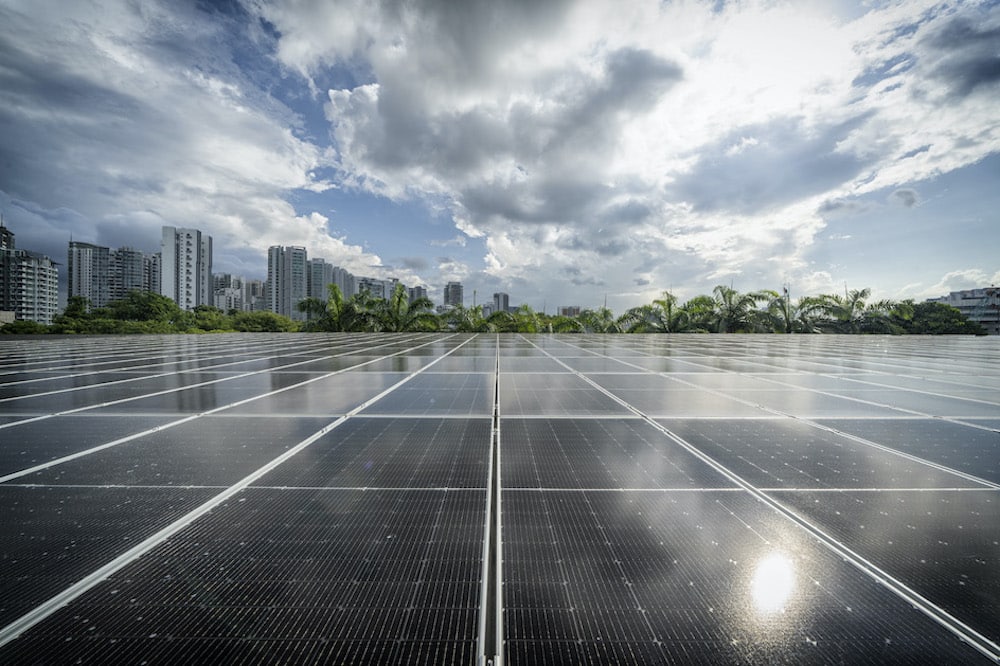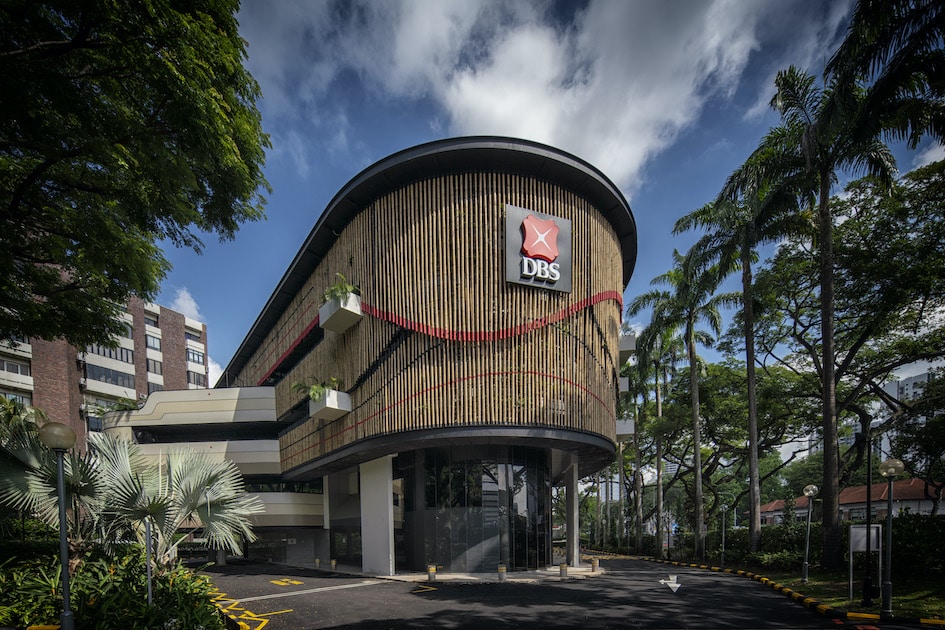DBS Newton Green is one of Singapore’s first net zero buildings by a bank and a great example of the potential of retrofitting over rebuilding. In line with the bank’s net zero targets, the 30-year-old building was set for demolition before a bold retrofit was proposed and approved to reduce embodied carbon impact without compromising on the facility’s operational net zero ambitions.
Retrofitting works at the 135 Bukit Timah Road site started in the middle of 2021, with investments of over SGD 5 million, and officially opened on 18 July 2022. The building now houses over 400 employees.
“While the sustainability challenges before us are manifold, DBS has prioritized climate action due to the sheer urgency of the issue and how it interrelates with other environmental and social concerns. We have been empowering our clients to reduce their carbon footprint, but it is equally important to lead by example and embed sustainability into our business practices and operations,” said Piyush Gupta, DBS’ CEO. “Anchored by this belief, the choice to retrofit DBS Newton Green into a net zero building rather than to redevelop something from ground up was an easy and obvious one.”
Energy Generation
Taking advantage of Singapore’s tropical location offering abundant sunshine, DBS set about maximizing their Newton Green site’s solar generating potential with a variety of innovative solutions.
As part of the building’s redevelopment, a new overhang was incorporated into the building design to expand the amount of rooftop space available for solar panels. Cavity spaces in the overhang’s structure also allowed for air handling units to be housed at the side of the building, freeing up more rooftop space, which has resulted in a total of over 1000 square meters of solar panels.

Innovative bi-facial modules were installed to enable the system to also harvest sunlight reflecting from the roof surface, not just light that hits the solar panels directly. And, the building installed AI-enabled optimizers to enhance the overall operating efficiency and performance of the building’s solar panel array.
In combination with efficiency, the expanded and optimized rooftop solar array can generate enough energy to cover the building’s electricity needs. The building had an existing diesel backup generator but DBS partnered Singapore-based Alpha Biofuels to replace the fuel with biodiesel produced from used cooking oil.

Energy Efficiency
Before retrofitting works began, the old building consumed about 845,000 kWh each year, equivalent to the annual energy consumption of about 200 four bedroom homes in Singapore. However, DBS and the retrofit project team began addressing every wasteful and energy hungry system to drive down overall consumption by 70%, as seen in the graphic above showing reductions in energy consumption per system and overall.
10% of the floor area that was previously air-conditioned has been converted to naturally ventilated spaces that do not need air-conditioning. A slatted façade made of bamboo shades almost the entire building to encourage natural ventilation, while intelligent occupancy based lighting and air-conditioning systems further optimize energy consumption in line with occupant health and comfort demands.
Low energy appliances such as heat pump water heaters and energy-efficient fans coupled with reengineered plumbing reduced energy consumption in common areas such as lobbies, pantries, and social spaces down by 70%. Several independent and self-powered solar air-conditioning systems, exhaust fans, and lampposts all work to further reduce the overall demand for energy.
Over 50% of the building’s perimeter façade is covered with living plants, which significantly lowers the internal building temperature by reducing urban heat gain, whilst also providing refuge for native butterfly and bird species, as discussed below.
Embodied Carbon
By retrofitting the 30-year-old building, DBS extended the facility’s lifespan and avoided squandering the embodied carbon of the existing concrete and steel structure, and avoided the additional embodied carbon cost of creating a brand new structure. DBS Newton Green special attention to embodied carbon, more than we typically see in net zero buildings, through a variety of innovative tools and progressive partnerships.
The 50% of the building’s bamboo façade is covered with plants selected in collaboration with the Nature Society of Singapore to provide suitable refuge to the country’s rare and native butterfly and bird species, such as magpie robin, bulbul, and flowerpecker. The bamboo itself is a natural and locally growing building material with significantly lower carbon cost than concrete or steel.

Magorium, a social enterprise supported by the DBS Foundation, was brought in to pave the driveway to the compound using a sustainable material called ‘NEWBitumen’. The material, made from recycled plastic waste and reprocessed asphalt waste, is an effective replacement to the bitumen derived from crude oil that is traditionally used to pave roads.
While many of these initiatives are not directly building-focused, they serve to further reduce carbon costs that are not always considered in the net zero buildings environment, while also supporting the bank’s green and circular ambitions.
Net Zero Buildings Environment
Singapore is fast becoming a world leader for net zero buildings, driven by the national push to make 80% of Singapore’s buildings (by gross floor area) green by 2030 under the Singapore Green Building Masterplan. And, a significant portion of the retrofit cost was covered by a grant awarded by Singapore’s Building and Construction Authority (BCA) under the national Green Buildings Innovation Cluster (GBIC) Programme to support the integration of green innovations throughout the development.
“We need to retrofit many more of our older buildings to improve their sustainability standards. This is more challenging than designing a new green building from scratch,” said Mr Desmond Lee, Minister for National Development and Social Services Development, who opened the DBS Newton Green facility. “The original development may not have been designed with sustainability in mind, making retrofitting more complex and potentially costly. I congratulate DBS and its partners on transforming this building into Singapore’s first net zero building by a bank. Such teamwork between the private, public and people sectors is critical, as we strive to grow a more sustainable City in Nature.”
The building has now been certified by the BCA as a Green Mark Platinum Zero Energy development in further affirmation of the building’s net zero credentials. It was also awarded the Singapore Good Design Mark 2022 for Sustainable Design by the Design Business Chamber of Singapore in recognition of the building’s exceptional design quality.



